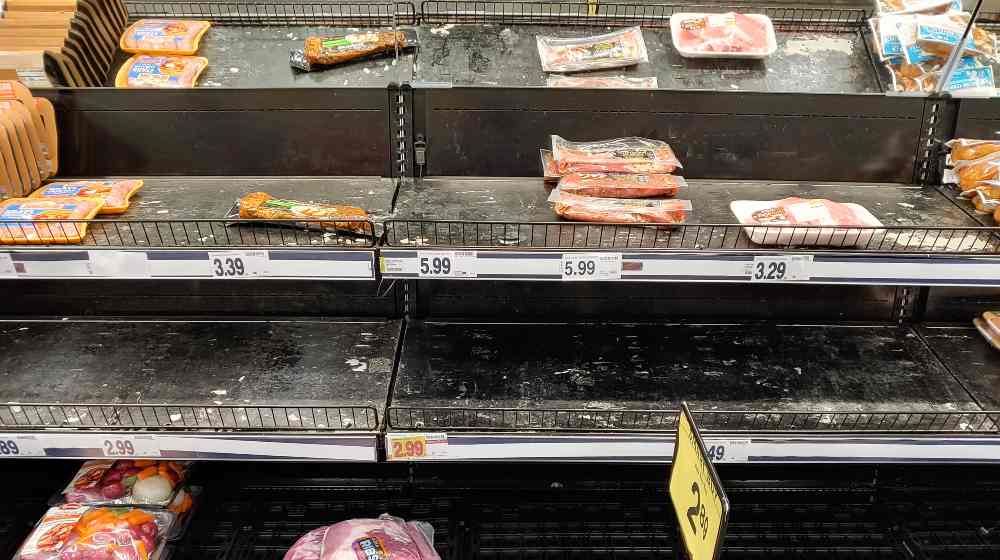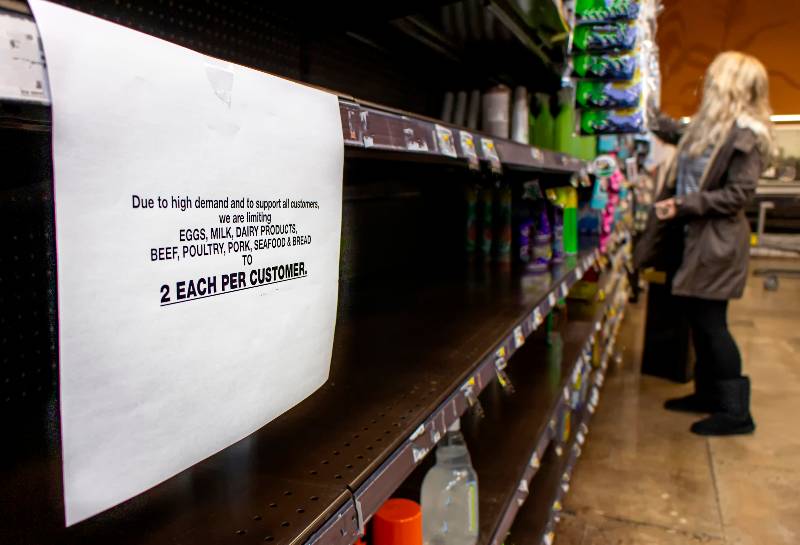Business
America’s Food Supply System Is Straining Under Omicron

The US food supply system is under considerable strain under Omicron. From processing plants to supermarket shelves, many workers are calling in sick and staying away from their jobs.
RELATED: Supermarkets Stocking Up As Food Prices Rise
US Food Supply Under Attack By Omicron Variant, Many Workers Out Sick

A major production company in Arizona reported that one in ten workers are out sick. Meanwhile, a Massachusetts supplier says that worker illnesses slowed the transport of fish to supermarkets and restaurants.
In the US Southeast, a grocery chain had to make do with temporary workers when almost a third of employees went down.
Food supply industry experts are now warning Americans that the COVID situation may persist for weeks or months.
The Omicron variant of coronavirus can spread faster than any other strain, and it is now affecting the food supply chain. In many cases, the outbreak affected both processing and deliveries.
Food Supply Disruptions Are Now Worse Than Ever
Food industry executives say that the disruptions are worse now than ever. The lack of available workers is now affecting a broader range of products.
Depending on how many workers can report for work, the availability of certain items changes on a daily basis.
Meanwhile, supermarket operators and food manufacturers say that overall, supplies are more than enough. The problem is the continued shortage of workers and problems with transporting the products.
American households will eventually find the item they want to buy. However, they might need to seek alternatives and switch brands
Picker, Sorters, and Drivers Are Out Sick
Eddie Quezada, produce manager at a Stop & Shop branch in Newport, New York, said this was the worst so far. Throughout the pandemic, Omicron is the one that prevented more employees from working.
One in five of his workers contracted COVID-19 by January. In addition, deliveries also took some blows. Many ordered products came in fewer quantities if they ever arrived at all.
Meanwhile, Piggly Wiggly reported that one-third of pickers didn’t make it to work in the first week of 2022. As a result, nobody was available to organize the products and load trucks at its distribution centers.
According to controller Keith Milligan, the company is facing challenges in getting its food to its stores in time. Truck drivers and in short supply while staffing issues remain a problem.
In-Stock Levels Going Down
Consequently, in-stock levels of food products hit a low of 85% for the weekend ending January 16. This is the lowest rate compared to pandemic-stricken summers, where the numbers still hit 90%.
In particular, sports drinks, frozen cookies, and refrigerated dough are in short supply, with stocks in the 60-70% levels. In rural areas such as Alaska and West Virginia, in-stock rates are even much lower.
Vivek Sankaran, CEO of Albertsons, said that everybody expected that the US already solved its supply problems at this point. “Omicron has put a bit of a dent on that,” he said. Sankaran added that the supermarket chain expects more supply challenges over the next few months.
Packaged Food Also Dealing With Supply Issues
In addition, meatpacking and packaged food plants are also experiencing lower production due to Omicron. The US Department of Agriculture reported that cattle slaughter and beef production were down by 5% from a year earlier.
Similarly, hog slaughter is down 9%, while chicken processing is 4% lower than 2021 levels. Lack of available workers is also affecting milk processing and cheese production.
Watch the Fox 5 Las Vegas news video reporting that supply chain issues hit Las Vegas grocery stories:
What do you think of the current worker shortage in US food supply systems? Do you think this will continue this year? Or, do you see things normalizing sooner than later?
Let us know what you think. Share your comments below.
















2 Comments
I call BS Communist Democratic Party is to blame
Dementia pefo joe, too busy pinching little girls nipples to care! Let them eat cake right Xiden! And buttyjiggle hasnt done his job since it was handed to hin. Wonder how he got it? On his knees in front of joe? Circle jerk with xixi?!